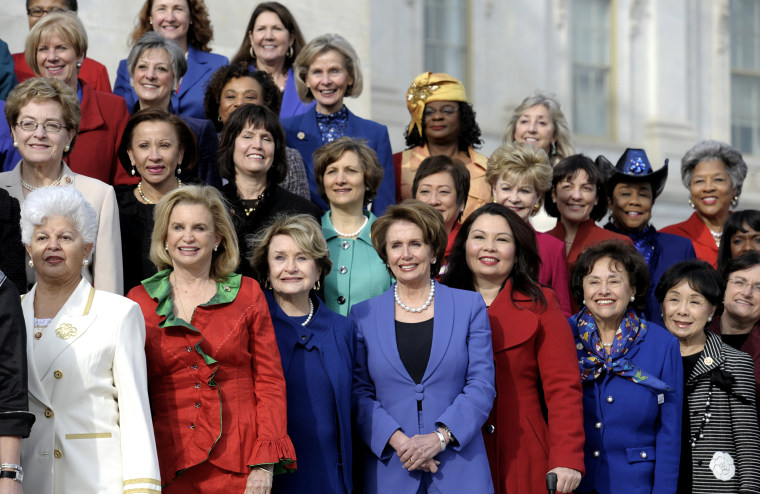"Our young women are forming a new era in female history," wrote Massachusetts feminist Judith Sargent Murray excitedly. "The Rights of Women begin to be understood; we seem, at length, determined to do justice." The year was 1798. It would be two hundred and fourteen years until her home state would elect its first female senator, Elizabeth Warren. This year, it might get its first elected female governor, likely Democratic nominee Martha Coakley.
In other words, when it comes to women in public life, the triumphalism has occasionally been premature. Progress has been too often followed by backlash. The first time we heard “The Year of the Woman,” in 1992, the number of the women in the House and Senate grew exponentially–followed by a flattening when Republicans took over two years later. Even after last year’s record-breaking election, the one that elected Warren and brought the number of women in the Senate to an unprecedented 20, the United States still ranks 79th in the world in female representation. (That well behind Saudi Arabia and Bangladesh, to name two.) The numbers are even bleaker when you look for women who aren’t white.
But America is moving forward. There were those twenty Senate women of 2012, including the first out lesbian Senator in Tammy Baldwin; the first Asian-American female Senator, Mazie Hirono; and Claire McCaskill, who prevailed over Todd “legitimate rape” Akin. In 2013, Janet Yellen became the first female chair of the Federal Reserve. Meanwhile, Republicans have been hastily trying to show America that, in the immortal words of Ann Romney at the last Republican National Convention, “I love you, women!”
And 2014 offers even more reason for conditional optimism. Some of the most consequential Senate races of 2014, particularly if you’re rooting for Democrats to keep the Senate, have women at the center: Allison Lundergan Grimes, seeking to topple Senate Minority Leader Mitch McConnell; Michelle Nunn, raising Democratic hopes in red Georgia; the potential loss of the long Democratic hold on a West Virginia Senate seat, with two women on either side of the aisle running. Two defenders, Senators Mary Landrieu and Kay Hagan, are also pivotal. While Republicans currently have the advantage on female governors, New Hampshire’s Maggie Hassan, the sole female Democratic governor, might be joined by the women running in Wisconsin, Rhode Island, Pennsylvania and Massachusetts.
And maybe, just maybe, in Texas, where Wendy Davis is running for governor along with lieutenant governor candidate Leticia van de Putte. Conventional wisdom has it that they are too liberal, that Davis is too tarred by the "Abortion Barbie" moniker, that they are running too soon for Texas’s coming demographic shift-- especially in an era of barely-restrained voter suppression. But conventional wisdom has been wrong before.
On the night Texas Republicans sandbagged Davis’s historic filibuster of an omnibus abortion bill, van de Putte, who had just left her father’s funeral, struggled to be heard. "At what point,” she asked, “must a female senator raise her hand or her voice to be recognized over her male colleagues?”
This year, as Davis and van de Putte try to turn Texas blue together, that point may come. We'll be there.
